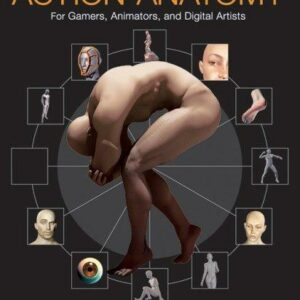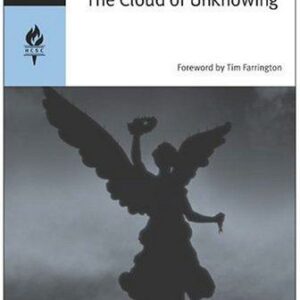Present Shock
$17.00
| Title | Range | Discount |
|---|---|---|
| Trade Discount | 5 + | 25% |
- Description
- Additional information
Description
People spent the twentieth century obsessed with the future. We created technologies that would help connect us faster, gather news, map the planet, and compile knowledge. We strove for an instantaneous network where time and space could be compressed. Well, the future’s arrived. We live in a continuous now enabled by Twitter, email, and a so-called real-time technological shift. Yet this “now” is an elusive goal that we can never quite reach. And the dissonance between our digital selves and our analog bodies has thrown us into a new state of anxiety: present shock.“This is a wondrously thought-provoking book. Unlike other social theorists who either mindlessly decry or celebrate the digital age, Rushkof f explores how it has caused a focus on the immediate moment that can be both disorienting and energizing.”
—Walter Isaacson, author of Steve Jobs
“Rushkoff gives readers a healthy dose of perspective, insight, and critical analysis that’s sure to get minds spinning and tongues wagging.”
—Publishers Weekly (starred review)
“In this refreshing antidote to promises of digital Utopia, Rushkoff articulates his own well-informed second thoughts. We should pay close attention—while we still can.”
—George Dyson, author of Turing’s Cathedral and Darwin Among the Machines
“If you read one book next year to help you make sense of the present moment, let it be Present Shock.”
—Anthony Wing Kosner, Forbes.com
“Present Shock holds up new lenses and offers new narratives about what might be happening to us and why, compelling readers to look at the larger repercussions of today’s technologically mediated social practices, from texting to checking in with a location-based service, jet-lag to The Simpsons, in new ways.”
—Howard Rheingold, author of Net Smart
“A wide-ranging social and cultural critique, Present Shock artfully weaves through many different materials as it makes its point: we are exhilarated, drugged, and consumed by the now. But we need to attend to the future before us and embrace the present in a more constructive way.”
—Sherry Turkle, author of Alone Together
“With brilliant insight Rushkoff once again gets there early, making us confront the new world of ‘presentism’—the shif t in our focus from the future to the present, from the horizon-gazing to the experience of here and now. He points to signs of presentism all around us—in how we conduct politics, interact with media, and negotiate relationships.”
—Marina Gorbis, executive director, Institute for the FutureDouglas Ruskoff’s previous books, including Cyberia and Media Virus, have been translated into thirteen languages. He is the Technology and Culture Consultant to the United Nations Commission on World Culture and a regular consultant to Fortune 500 companies, and he writes a bi-weekly column for the New York Times syndicate. He teaches at the Esalen Institute and Banff Center for the Arts, and will be adjunct professor of Media Sociology at New York University in 1999. He lives in New York City.
PREFACE
He is one of the most prescient hedge fund managers on Wall Street, but his trades always seem to happen after the fact. That’s because as soon as he executes an order, it is observed and preempted by traders at bigger firms with faster computers. The spread changes, and his buy order goes through just a few fractions of a penny higher than it should have. He is trading in the past, longing for the software and geeks he needs to get into his competitors’ present. And his clients can no longer conceive of investing in a company’s future, anyway; they want to win on the trade itself, as it actually happens.
She’s at a bar on Manhattan’s Upper East Side, but she seems oblivious to the boys and the music. Instead of engaging with those around her, she’s scrolling through text messages on her phone, from friends at other parties across town. She needs to know if the event she’s at is the event to be at, or whether something better is happening at that very moment, somewhere else. Sure enough, a blip on the tiny screen catches her interest, and in seconds her posse is in a cab headed for the East Village. She arrives at a seemingly identical party and decides it’s “the place to be,” yet instead of enjoying it, she turns her phone around, activates the camera, and proceeds to take pictures of herself and her friends for the next hour—instantly uploading them for the world to see her in the moment.
He sees the signs all around him: the latest “natural” disaster on the evening news; the fluctuations in the prices at the gas pump; talk of a single world currency. Information overload might not have increased the rate at which disasters occur, but it has exponentially increased the rate at which they’re witnessed. As a result, prophecy no longer feels like a description of the future but, rather, a guide to the present. The ideas of quantum physicists and the Mayans have been twisted to indicate that time itself will soon be coming to an end, anyway. The messianic age is no longer something to prepare for; it is a current event. What would Jesus do?
This is the new “now.”
Our society has reoriented itself to the present moment. Everything is live, real time, and always-on. It’s not a mere speeding up, however much our lifestyles and technologies have accelerated the rate at which we attempt to do things. It’s more of a diminishment of anything that isn’t happening right now— and the onslaught of everything that supposedly is.
It’s why the world’s leading search engine is evolving into a live, customized, and predictive flow of data branded “Google Now”; why email is giving way to texting, and why blogs are being superseded by Twitter feeds. It’s why kids in school can no longer follow linear arguments; why narrative structure collapsed into reality TV; and why we can’t engage in meaningful dialogue about last month’s books and music, much less long- term global issues. It’s why an economy once based on long- term investment and interest bearing currency can no longer provide capital to those who plan to put it to work for future rewards. It’s why so many long for a “singularity” or a 2012 apocalypse to end linear time altogether and throw us into a posthistoric eternal present— no matter the cost to human agency or civilization itself.
But it’s also how we find out what’s happening on the streets of Iran before CNN can assemble a camera crew. It’s what enables an unsatisfied but upwardly mobile executive to quit his job and move with his family to Vermont to make kayaks— which he thought he’d get to do only once he retired. It’s how millions of young people can choose to embody a new activism based in patient consensus instead of contentious debate. It’s what enables companies like H& M or Zara to fabricate clothes in real time, based on the instantaneous data coming from scanned tags at checkout counters five thousand miles away. It’s how a president can run for office and win by breaking from the seeming tyranny of the past and its false hope, and tell voters that “we are the ones we have been waiting for.”
Well, the waiting is over. Here we are.
If the end of the twentieth century can be characterized by futurism, the twenty- first can be defined by presentism.
The looking forward so prevalent in the late 1990s was bound to end once the new millennium began. Like some others of that era, I predicted a new focus on the moment, on real experience, and on what things are actually worth right now. Then 9/ 11 magnified this sensibility, forcing America as a nation to contend with its own impermanence. People had babies in droves, and even fi led for divorces, in what was at least an unconscious awareness that none of us lives forever and an accompanying reluctance to postpone things indefinitely. Add real- time technologies, from the iPhone to Twitter; a disposable consumer economy where 1-Click ordering is more important than the actual product being purchased; a multitasking brain actually incapable of storage or sustained argument; and an economy based on spending now what one may or may not earn in a lifetime, and you can’t help but become temporally disoriented. It’s akin to the onslaught of changing rules and circumstances that 1970s futurist Alvin Toffler dubbed “future shock.”
Only, in our era it’s more of a present shock. And while this phenomenon is clearly “of the moment,” it’s not quite as in the moment as we may have expected. For while many of us were correct about the way all this presentism would affect investments and finance, even technology and media, we were utterly wrong about how living in the “now” would end up impacting us as people. Our focus on the present may have liberated us from the twentieth century’s dangerously compelling ideological narratives. No one— well, hardly anyone— can still be convinced that brutal means are justified by mythological ends. And people are less likely to believe employers’ and corporations’ false promises of future rewards for years of loyalty now. But it has not actually brought us into greater awareness of what is going on around us. We are not approaching some Zen state of an infinite moment, completely at one with our surroundings, connected to others, and aware of ourselves on any fundamental level.
Rather, we tend to exist in a distracted present, where forces on the periphery are magnified and those immediately before us are ignored. Our ability to create a plan— much less follow through on it— is undermined by our need to be able to improvise our way through any number of external impacts that stand to derail us at any moment. Instead of finding a stable foothold in the here and now, we end up reacting to the ever- present assault of simultaneous impulses and commands.
In some senses, this was the goal of those who developed the computers and networks on which we depend today. Mid- twentieth century computing visionaries Vannevar Bush and J. C. R. Licklider dreamed of developing machines that could do our remembering for us. Computers would free us from the tyranny of the past— as well as the horrors of World War II— allowing us to forget everything and devote our minds to solving the problems of today. The information would still be there; it would simply be stored out of body, in a machine.
It’s a tribute to both their designs on the future and their devotion to the past that they succeeded in their quest to free up the present of the burden of memory. We have, in a sense, been allowed to dedicate much more of our cognitive resources to active RAM than to maintaining our cerebral- storage hard drives. But we are also in danger of squandering this cognitive surplus on the trivial pursuit of the immediately relevant over any continuance of the innovation that got us to this point.
Behavioral economists exploit the growing disparity between our understanding of the present and that of the future, helping us see future debts as less relevant than current costs and leading us to make financial decisions against our own better interests. As these ways of understanding debt and lending trickle up to those making decisions about banking and macro finance— such as the Federal
Reserve or the European Central Bank— our greater economies end up suffering from the same sorts of logical traps as those of individual mortgage holders and credit card users.
Neuroscientists, mostly at the service of corporations looking to develop more compliant employees and consumers, are homing in on the way people make choices. But no matter how many subjects they put in their MRI machines, the focus of this research is decision making in the moment, the impulsive choices made in the blink of an eye, rather than those made by the lobes responsible for rational thought or consideration. By implementing their wares solely on the impulsive— while diminishing or altogether disregarding the considered— they push us toward acting in what is thought of as an instinctual, reptilian fashion.
And this mode of behavior is then justified as somehow more connected to the organic, emotional, and immediately relevant moment in which human beings actually live. Of course, this depiction of consciousness may help sell the services of neurotechnicians to advertisers, but it does not accurately represent how the human brain relates to the moment in which the organism exists.
No matter how invasive the technologies at their disposal, marketers and pollsters never come to terms with the living process through which people choose products or candidates; they are looking at what people just bought or thought, and making calculations based on that after- the- fact data. The “now” they seek to understand tells them nothing about desire, reasons, or context. It is simply an effort to key off what we have just done in order to manipulate our decisions in the future. Their campaigns encourage the kinds of impulsive behavior that fool us into thinking we are living in the now while actually just making us better targets for their techniques.
That is because there is no now—not the one they’re talking about, anyway. It is necessarily and essentially trivial. The minute the “now” is apprehended, it has already passed. Like they used to say about getting one’s picture on a Time magazine cover: the moment something is realized, it is over. And like the diminishing beauty returns for a facially paralyzed Botox addict, the more forcefully we attempt to stop the passage of time, the less available we are to the very moment we seek to preserve.
As a result, our culture becomes an entropic, static hum of everybody trying to capture the slipping moment. Narrativity and goals are surrendered to a skewed notion of the real and the immediate; the Tweet; the status update. What we are doing at any given moment becomes all- important— which is behavioristically doomed. For this desperate approach to time is at once fl awed and narcissistic. Which “now” is important: the now I just lived or the now I’m in right now? In the following chapters, we will explore present shock as it manifests in a variety of ways, on a myriad of levels. We will look at how it changes the way we make and experience culture, run our businesses, invest our money, conduct our politics, understand science, and make sense of our world. In doing so, we will consider panic reactions to present shock right alongside more successful approaches to living outside what we have always thought of as time.
The book is divided into fi ve sections, corresponding to the fi ve main ways that present shock manifests for us. We begin with the collapse of narrative. How do we tell stories and convey values without the time required to tell a linear story? How does pop culture continue to function without traditional storylines, and how does politics communicate without grand narratives? We move on to “Digiphrenia”—the way our media and technologies encourage us to be in more than one place at the same time. We’ll see that our relationship to time has always been defined by the technologies we use to measure it, and that digital time presents particular challenges we haven’t had to contend with before. In “Overwinding,” we look at the effort to squish really big timescales into much smaller ones. It’s the effort to make the passing moment responsible for the sorts of effects that actually take real time to occur. In particular, what does this do to business and finance, which are relying on increasingly derivative forms of investment? Next we look at what happens when we try to make sense of our world entirely in the present tense. Without a timeline through which to parse causes and effects, we instead attempt to draw connections from one thing to another in the frozen moment, even when such connections are forced or imaginary. It’s a desperate grasp for real- time pattern recognition I’ll call “Fractalnoia.” Finally, we face “Apocalypto”—the way a seemingly infinite present makes us long for endings, by almost any means necessary.
We will encounter drone pilots contending with the stress of dropping bombs on a distant war zone by remote control before driving home to the suburbs for supper an hour later. We will see the way the physical real estate of Manhattan is being optimized for the functioning of the ultrafast trading algorithms now running the stock market— as well as what this means for the human traders left in the wake. We will encounter doomsday “preppers” who stock up on silver coins and ready-to-eat meals while dismissing climate change as a conspiracy theory hatched by Al Gore and since exposed in an email scandal. 3 We will consider the “singularity”—as well as our scientific community’s response to present shock— especially for the ways it mirrors the religious extremism accompanying other great social shifts throughout history.
Most important, we will consider what we human beings can do to pace ourselves and our expectations when there’s no temporal backdrop against which to measure our progress, no narrative through which to make sense of our actions, no future toward which we may strive, and seemingly no time to figure any of this out.
I suggest we intervene on our own behalf— and that we do it right now, in the present moment. When things begin accelerating wildly out of control, sometimes patience is the only answer. Press pause.
We have time for this.US
Additional information
| Weight | 9 oz |
|---|---|
| Dimensions | 0.7200 × 5.3500 × 7.9700 in |
| Imprint | |
| ISBN-13 | |
| Author | |
| Audience | |
| BISAC | |
| Subjects | business history, strategy, money, corporations, engineer, economics books, SOC002010, BUS077000, political books, business books, sociology books, biographies, cultural anthropology, human evolution, social engineering, historical nonfiction, homosapiens, human evolution books, engineering books, engineer gifts, automation, economics, philosophy, anthropology, politics, culture, psychology, business, science, technology, Sociology, history, evolution, engineering, economy, history books, anthropology books, ai, internet, pop culture, science books |
| Format |











